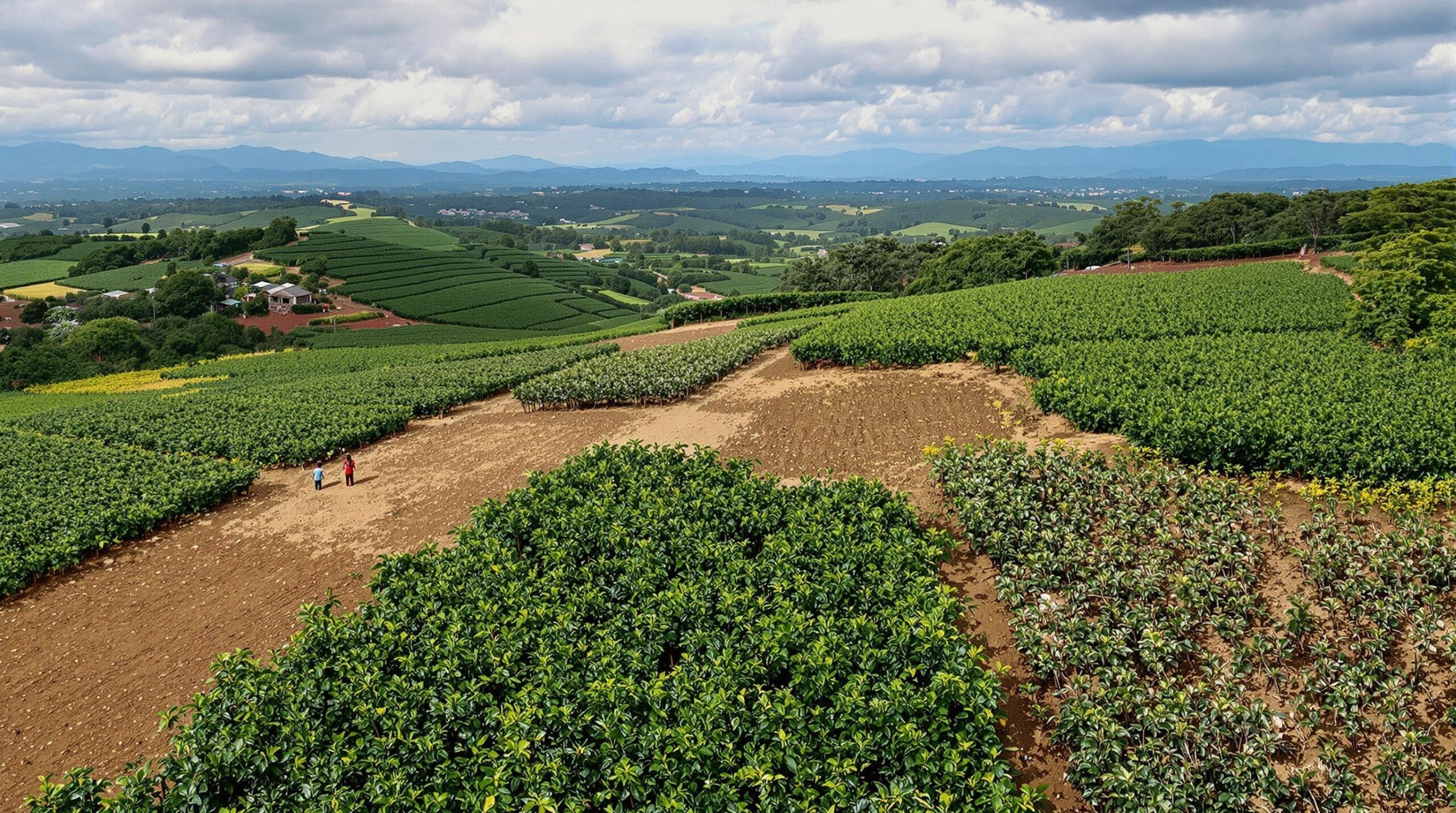Coffee is a beloved beverage enjoyed by millions every day. However, the world’s morning ritual faces an unprecedented challenge. Climate change is disrupting coffee production on a global scale, forcing growers and industries to adapt quickly. New strategies are emerging, as shifting weather patterns threaten both the quality and supply of coffee.
Shifting Coffee Belts: Changing Climatic Zones
Coffee grows best in specific climatic regions, known as the “coffee belt.” This belt spans the tropics between the Tropic of Cancer and the Tropic of Capricorn. It includes countries in Central and South America, Africa, Southeast Asia, and Oceania. Optimal conditions include consistent rainfall, moderate temperatures, and predictable seasons.
Climate change is altering these historic patterns. Rising temperatures push traditional growing areas to higher altitudes. Coffee farmers in low-lying regions experience increased heat and erratic rainfall. As a result, they struggle to maintain yields and bean quality. Some areas become unsuitable for coffee, while new regions gain potential for cultivation. This shift drives experimentation and research into adapting cultivation to new landscapes.
Increased Pest and Disease Pressure
Pests and diseases thrive under warmer, wetter conditions. The coffee berry borer and leaf rust fungus are two notorious threats to coffee crops. Rising temperatures allow these organisms to survive at higher altitudes and move into previously unaffected areas. Farmers face more frequent and severe outbreaks, which can decimate entire harvests.
To combat these challenges, growers must invest in new pest control and disease management techniques. This often requires more labor, higher costs, and specialized knowledge. Research organizations are developing disease-resistant coffee varieties. Farmers are also trained in integrated pest management methods tailored to evolving pest populations. These innovations become essential for maintaining coffee yields under pressure from climate change.
Droughts and Extreme Weather Events Threaten Production
Unpredictable weather, including prolonged droughts and heavy rains, creates major challenges for coffee producers. Beans require precise conditions for flowering, fruit development, and ripening. Extreme weather disrupts these delicate stages. Prolonged drought stresses coffee plants, reducing productivity and flavor quality. Heavy or unseasonal rains can wash away blooms and cause mold in developing cherries. Storms and floods damage infrastructure and erode precious topsoil, increasing costs and risks for growers.
Many producers are investing in water conservation and irrigation systems to withstand dry spells. Others construct windbreaks or plant shade trees to create microclimates that buffer extreme highs and lows. Diversifying crops and adopting resilient farming practices help reduce vulnerability when disasters strike. These investments are necessary as the weather becomes more unpredictable due to climate change.
Genetic Diversity and Innovation in Coffee Crops
The coffee industry relies heavily on two main species: Arabica and Robusta. Arabica produces specialty coffee with nuanced flavors but is highly sensitive to climate shifts. Robusta is hardier and more tolerant of high temperatures and pests, but generally considered lower in quality.
Scientists and farmers are searching for new coffee varietals with better tolerance to heat, drought, and disease. Preserving genetic diversity is now a critical goal, as it helps build resilience into the coffee supply chain. Breeding programs cross traditional varieties with wild species to find plants that can withstand harsher growing conditions. This innovation opens the door for new coffee flavors and growing regions, but it requires investment and consumer acceptance.
Sustainable and Regenerative Agriculture Practices
Adapting to climate change means rethinking traditional farming methods. More producers are turning to sustainable and regenerative agriculture to build resilience. Shade-grown coffee reduces heat stress on plants and supports biodiversity. Organic practices help maintain healthy soil, which retains water and provides nutrients during drought. Cover crops, mulching, and intercropping reduce erosion and improve soil fertility.
Regenerative farming not only addresses immediate environmental threats but also stores carbon in soil and reduces greenhouse gas emissions. Many coffee cooperatives receive support and training from NGOs and governments to adopt these techniques. This improves both productivity and quality, ensuring a more sustainable future for coffee and those who depend on it.
Technology and Data-Driven Decision Making
Technology plays a crucial role in modern coffee farming. Farmers use weather forecasting platforms and early-warning systems to anticipate risks and time planting or harvesting. Mobile applications deliver real-time advice on disease management or pest outbreaks. Remote sensing technology tracks changes in rainfall, temperature, and soil health across vast coffee landscapes.
Data-driven approaches enable targeted intervention, reduce waste, and increase resource efficiency. This modern toolkit helps farmers adapt faster and more effectively to dynamic challenges. Access to data also connects producers with markets seeking sustainably grown coffee, fostering transparency and traceability throughout the supply chain.
Impacts on Coffee Communities and Market Dynamics
Climate change impacts extend far beyond the farm. Entire communities rely on coffee for livelihoods and social stability. As yields drop or fluctuate, families face economic insecurity. Migration from rural areas can rise, straining cities and disrupting social bonds. Meanwhile, increased production costs and supply shortages can drive up global coffee prices, affecting consumers worldwide.
Some cooperatives diversify income streams to reduce dependency on coffee alone. They may offer ecotourism, honey, or handicrafts, building resilience for families. Fair trade and certification schemes provide price guarantees, supporting producers through uncertainty. These programs also encourage sustainable land management, improving prospects for future generations.
Policy, Collaboration, and the Path Forward
Addressing climate change and its impacts on coffee demands cooperation at every level. Governments, industry stakeholders, and NGOs must support adaptation and mitigation efforts. Policy initiatives can provide research funding, climate insurance, and access to resources for smallholder farmers. International collaboration ensures best practices are shared and that research benefits all producers, large and small.
Consumers also have a vital role to play. By choosing sustainably grown coffee and supporting transparent supply chains, they can incentivize climate resilience. The global coffee community is finding ways to adapt, innovate, and protect one of the world’s most treasured crops. Working together provides hope for a future where coffee’s aroma continues to fill homes, cafes, and hearts worldwide.


